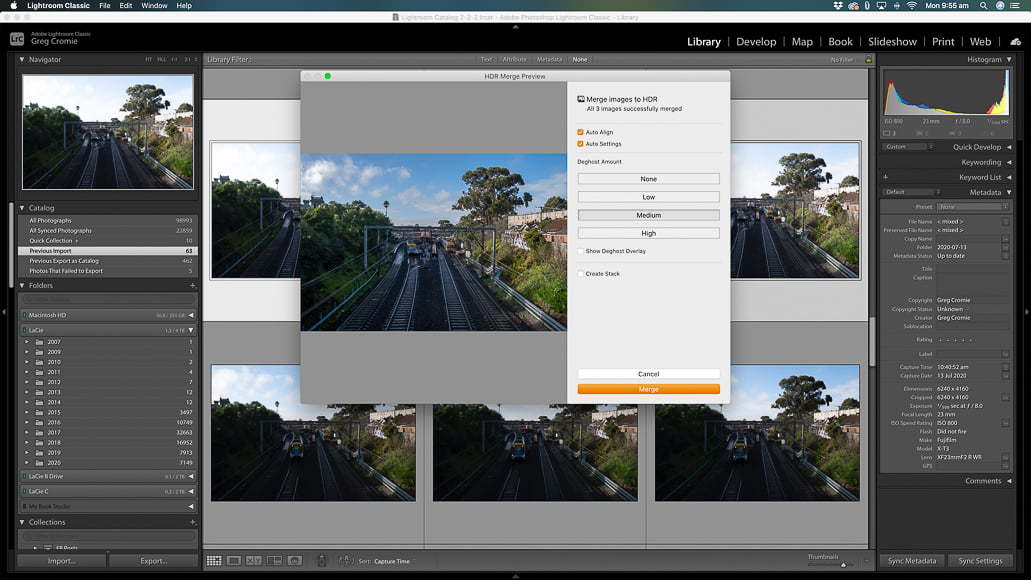

- #Capture one vs lightroom how to#
- #Capture one vs lightroom software#
- #Capture one vs lightroom code#
- #Capture one vs lightroom professional#
- #Capture one vs lightroom series#
With Fujifilm, there are objective differences that cannot be ignored. There was no clear way to determine a winner because both programs produced great results. With Canon and Sony, the choice between Lightroom and Capture One was entirely down to personal preference.
#Capture one vs lightroom series#
In this series of articles, we covered Canon, Sony, and now Fujifilm.

#Capture one vs lightroom professional#
If you're a professional photographer, it may be wise to avoid Lightroom and use Capture One instead. If you're creating content for social media, then this may be a forgivable issue. If you're a landscape photographer, you will likely come across this issue in your images. Effectively, this worming issue is going to be a problem if what you photograph contains a lot of green tones, for example, landscape photography. All of the other images tested did not demonstrate any issues. In the previous image, the blue and yellow tones were perfectly fine in how Lightroom rendered them however, green seems to cause a lot of problems.įrom the images that have been tested over the last month, it seems Lightroom mostly struggles with the color green. Also, Lightroom does do a better job at managing the vignette, but once again, some may prefer the darker corners.Īdditionally, Lightroom seems to have a problem when it comes to rendering green tones from an X-Trans sensor. Due to these subtle differences, most people may likely prefer the results from Capture One. The first thing to notice is that the Capture One image appears to have more contrast and vibrance. This is, of course, a matter of preference however, the point is that for Fujifilm X-Trans cameras, there is a difference in how the film profiles are rendered. This appears more pleasing in comparison to the Lightroom file, which leans more into the yellows tones. Also, there are subtle differences in how the film profiles are rendered too.Ĭapture One has slightly more saturated red tones in the skin. Lightroom seems to have some problems with X-Trans sensors. On the other hand, it's quite a different story when it comes to Fujifilm APS-C cameras. There is some back and forth between how Lightroom and Capture One work, however, for the most part, there's no clear winner. With Fujifilm medium format cameras, there is virtually no difference in how each of the film simulations are rendered. Some of their findings were quite interesting. In the FStoppers article, Which Program Handles Fujifilm Raw Files Better, Lightroom or Capture One?, they pit the two premier RAW processors against one another with Fujifilm files. Lightroom vs CP1 with a Dash of Neo on the Side
#Capture one vs lightroom code#
With regards to cost, I got Capture One with the AMBROSE voucher code for £276 uk.Apple Podcasts - Spotify Podcasts - Stitcher
#Capture one vs lightroom software#
I don't think I would recommend Capture as a first piece of editing software but Lightroom can be used by those who are at an earlier point in the learning curve. The similarity of the files shows that you can get to almost the same place with all three. I still have to experiment with old XT1files. Some of Lightroom's decent performance may be because I am using one of the most modern Fuji cameras. Iridient X-Transformer and Lightroom are very close. The overall conclusion is that if money was no object, Capture One would be my choice. There is a lot to customise and I may have more success as I change them. The most successful ones were borderline files that Lightroom struggled with. I found the files slightly better than the Lightroom conversions. You then work on the files in Lightroom or whatever your chosen editor is. What this does is to transform RAF files in to more compatible DNG files. Iridient X-Transformer Iridient by HectorHughMunro, on Flickr There are no Fuji simulations as they exist in Adobe but I prefer Capture. The forum feedback is true and Lightroom is just not doing a good enough job with Fuji files.Ĭapture colours are very attractive indeed. Working on the files, it's apparent that the initial conversion is where Capture scores. It doesn't I had to use the Clarity tool aggressively where it was not necessary in Capture.Ĭapture fails on reclaiming highlights.

The Lightroom shot looks like it has more detail in the background. Incidentally, the colour in the water is not artifact, it's blood! I'm finding Capture more adjustable and the detail is more natural.
#Capture one vs lightroom how to#
So far, I have not found out how to find the white and black points in Capture. Vignette is more controllable in Lightroom but more natural in Capture. A HDR/Pano tool primarily and the adjustment brush feels more intuitive in Lightroom. There are some things missing in Capture.


 0 kommentar(er)
0 kommentar(er)
